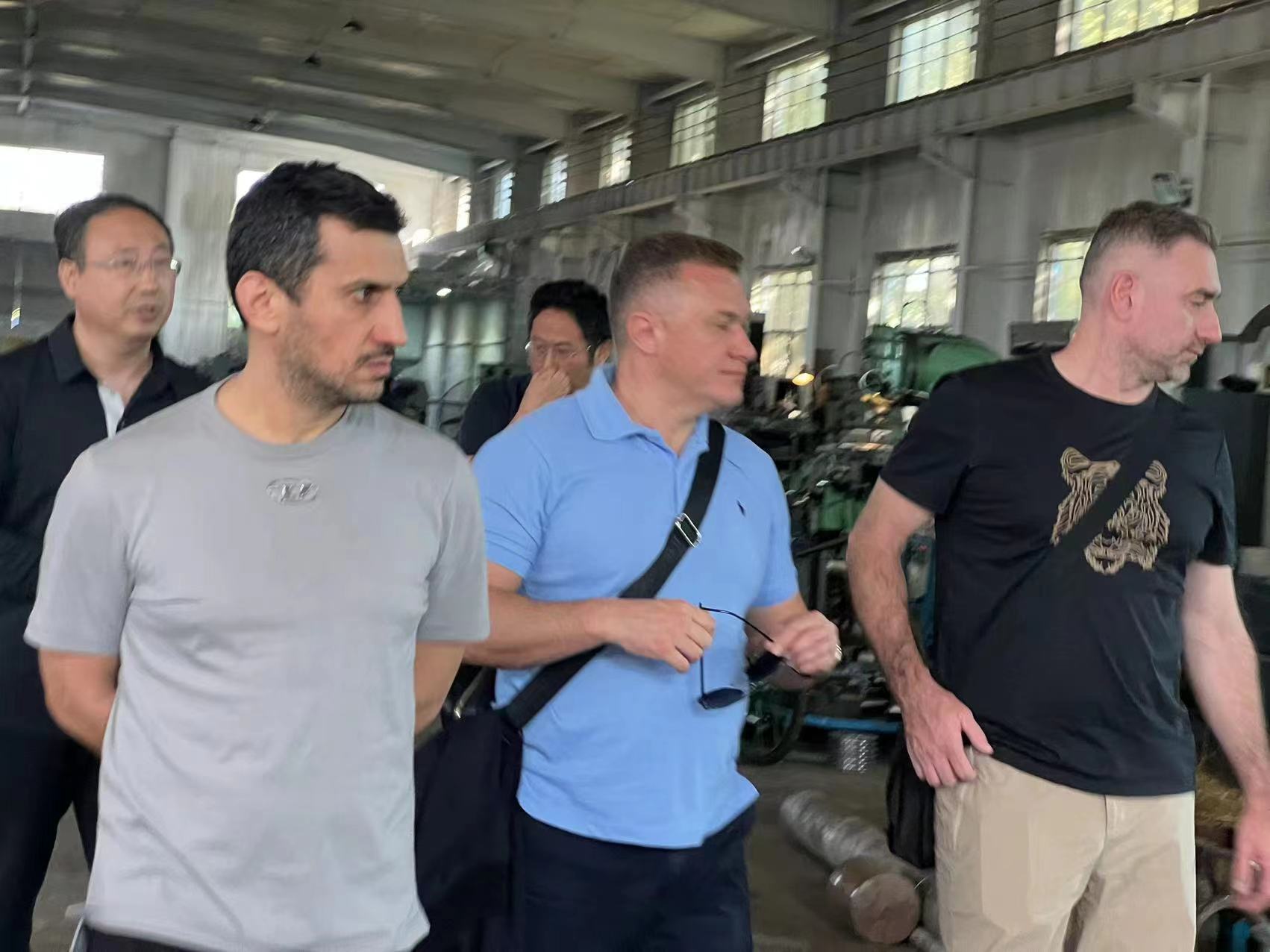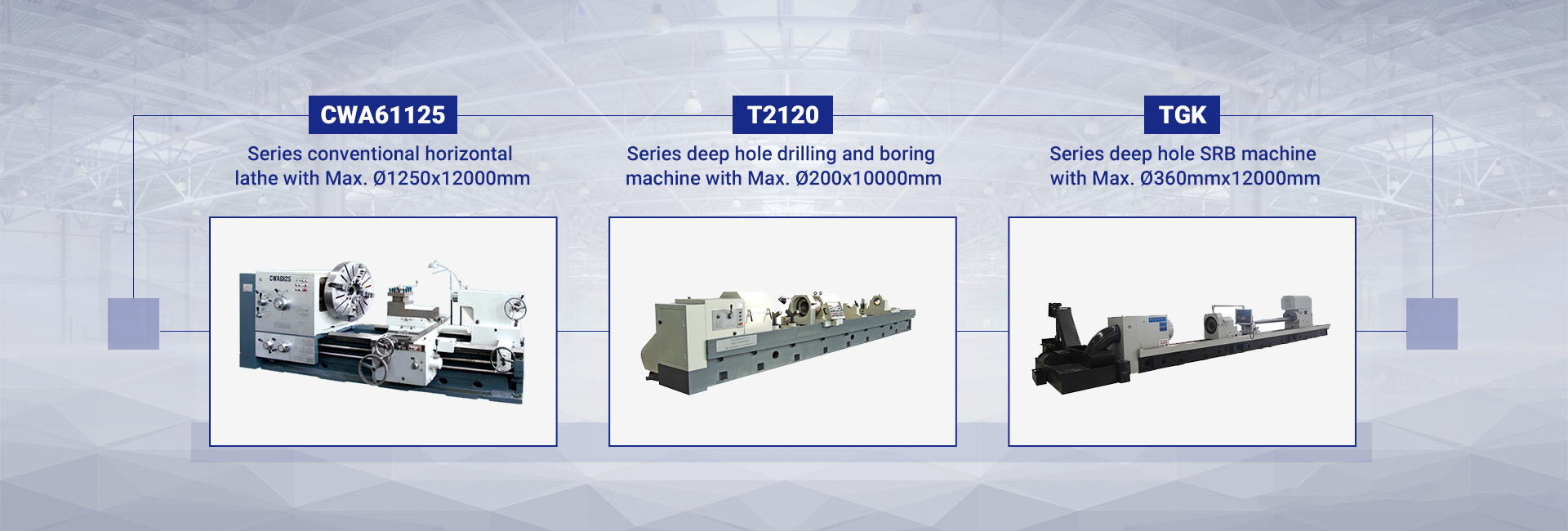The machining of lubricating oil holes of crankshaft using an inclined CNC lathe with a power drill is relatively expensive and has low machining efficiency. Our company has developed and designed a special 7-axis CNC deep hole drilling machine for crankshaft (gun drilling method) based on the characteristics of lubricating oil holes of crankshaft and the requirements of Russian customers. After two visits and negotiations by the customer, we have successfully received this order. Currently, this machine is in production, and the machine tool introduction is as follows:
Machine tool name: CNC deep hole drilling machine for crankshaft.
CNC axis of machine tool ( 6 servo axes, 1 servo spindle)
X-axis: Adjust the position of the tool in the axial direction of the workpiece, stroke: 4000mm, servo control.
Y-axis: controls the up and down movement of the measuring head, with a stroke of 200mm and servo control.
Z-axis: Control tool feed, complete drilling depth: 500mm, servo control.
W-axis: Adjustment of the distance between the tool and the workpiece, Stroke: 300mm, Servo control.
A-axis: workpiece indexing, servo control.
B-axis: Adjust the angle of the tool, adjustment range: ± 60 °, servo control.
Spindle: Drive tool rotation using variable frequency motor control.
Introduction of machine:
This equipment is a specialized machine for processing deep holes in the crankshaft, using the external chip removal method (gun drill) to process the deep holes on the crankshaft. The axial movement of the rotating power head of the machine and the processing of drilling depth are all using CNC methods, while the rotation of the crankshaft and the angle rotation of the power head can be by servo driving methods. During processing, the workpiece is through the A-axis angular rotation servo axis to locate and fix the position, while various auxiliary clamping and positioning devices on the worktable are adjusted. The power head and cutting tool are through the B-axis servo to rotate to the appropriate angle and to be fixed, and then to be moved to the appropriate position under the drive of X-axis (adjust the tool in the workpiece axial position) CNC system. The power head cutting tool rotates and feeds to start processing hole. After the completion of machining one hole, the power head moves axially to the appropriate position, and at the same time, the crankshaft rotates to the position of the next hole to be machined through A axis CNC servo indexing head, starting the next hole machining (if the drilling angle changes, the B axis servo rotates to the appropriate angle and then fix the position).
The bed body is divided into two parts: the bed of workpiece and the bed of power head. Automatic chip conveyer is installed between the bed of workpiece and the bed of power head to discharge the iron chips during processing; The X axis represents the axial movement axis for machining oil holes, W-axis is adjusting the distance between the cutting tool and the workpiece. The Z-axis is the feed CNC axis for machining oil holes. The angular rotation of the crankshaft (A-axis) and the rotation of the power head slide cutting tool (B-axis) can be done by servo motor. The bed of workpiece is precision iron casting with resin sand molding, providing a stable and reliable foundation for the workpiece. The bed of power head is fixed on the side of the bed of workpiece. According to the production need, this machine is equipped with one set of power head. The power head can be servo motorized rotated by 120 degrees. The power head is installed on a carriage (user supplied) of worktable with servo motor driving rotation, which can move axially along the crankshaft under the drive of the CNC system and be fixed to the appropriate machining position.
The power head is installed on the linear guide way of the feed slide that can be servo rotated. The spindle speed of the power head is stepless speed regulation, with a speed range of 800~4000r/min. It is driven by a servo motor through a synchronous belt and pulley. The power head can move back and forth along the Z-axis direction to complete the processing of deep holes.
The following picture shows the customers visiting our company for inspection and negotiation for this machine.
Post time: Nov-28-2023



